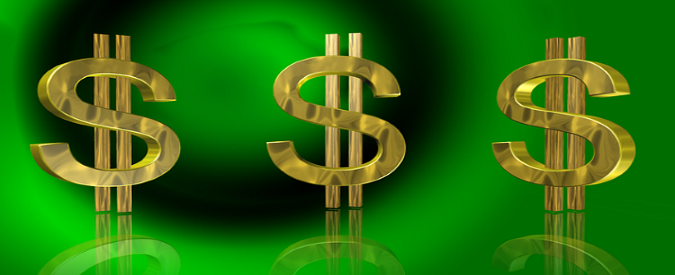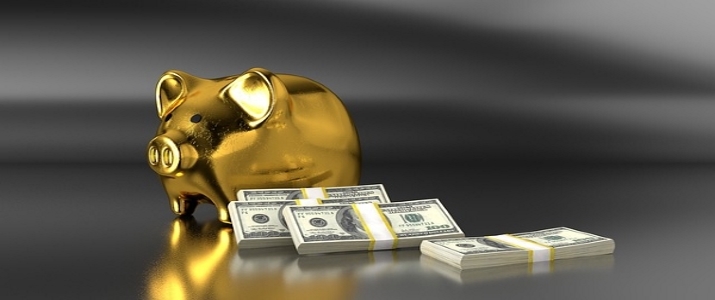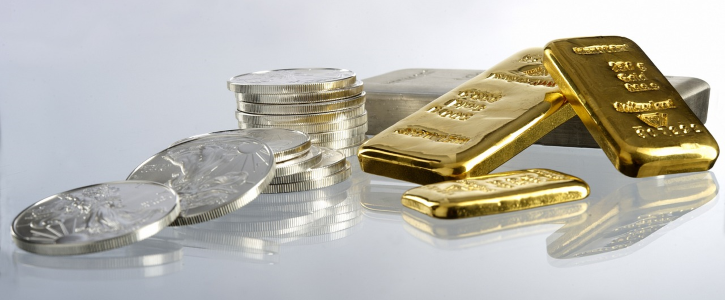. An emergency fund is something I believe everyone should have. In addition to investing, this is what I have been working to build up bit-by-bit over the past year. According to Bankrate, 61% of Americans would be unable to cover a major unexpected expense costing $1,000 from their savings. Other surveys taken peg this number much higher.
An emergency fund is something I believe everyone should have. In addition to investing, this is what I have been working to build up bit-by-bit over the past year. According to Bankrate, 61% of Americans would be unable to cover a major unexpected expense costing $1,000 from their savings. Other surveys taken peg this number much higher.
Many people tend to put off saving for a potential emergency or a an unexpected financial shock. But these do happen, and will happen at some point – 100% guaranteed! That is the way life works and we can’t control when these things happen. However, we can minimize the damage and significantly alter the fallout for the better.
These types of emergencies include; medical or dental problems, loss of employment, loss of a family member, automobile troubles, and unexpected home repairs. There are also minor things too such as the air-condition going on the fritz, television screen breaks, or computer problems (this happened to me last year). These things happen and if you are caught without an emergency fund you may find yourself in a world of trouble.
Often the solution most people adhere to is to put these expenses on credit cards and take out loans. This of course, sends you into the red and often leaves you in debt with more to pay it off each month. The emergency funds purpose is to cover these unexpected expenses.
Those familiar with my story know I had my share of unexpected tragedies. In fact, from the ages of 20 – 30 years old, right off hand, I can count 6 major catastrophes I had lived through. In the past year, if the worst that has happened to me was a broken computer and one lost umbrella, I say I am doing pretty good.
Nonetheless, I am more convinced then ever that an emergency fund is a necessity. It is eventually going to rain. In my experience, when it does finally rain, it won’t be a drizzle, rather it will pour down hard. That may sound pessimistic but that has been my past experience. However, I am more determined to be prepared for it, handle it, and come out of it stronger.
 How big should your emergency fund be? How many months of expenses should your emergency fund cover? The answer to these questions is largely subjective. It depends on your expenses and your particular situation. However, it is generally recommended you have 3-6 months’ worth of cash on hand to cover all monthly expenses.
How big should your emergency fund be? How many months of expenses should your emergency fund cover? The answer to these questions is largely subjective. It depends on your expenses and your particular situation. However, it is generally recommended you have 3-6 months’ worth of cash on hand to cover all monthly expenses.
That means cash as accessible as possible that you can easily take out. The simplest way is keeping the emergency fund in a savings account or a money market account (this is what I use at my bank).
As of this post, I am happy to report that I have managed to accumulate a bit over $9,000 in my emergency fund. My expenses are around $1,000 per month. So I am looking at 9 months of living expenses covered on their own. That is 9 months if I exclude all other possible emergencies outside of job loss.
Ultimately, I have a goal in mind of $12,000 in my money market as an emergency fund. That would cover an entire years’ worth of living expenses and provide a nice cushion for more other possible unexpected expenses (such as the AC or TV breaking). That is the number that would ultimately give me peace of mind. Anything after that is gravy on top.
Any worries I have would be related to major expenses. I don’t have a car, so I have no fears of emergency auto expenses. If something breaks in my apartment in most cases the building super will fix it. I have medical (plus hospital) and dental coverage from my job, so little worry there. And if an appliance breaks, I could get a new one easily enough.
The biggest potential unexpected financial emergency right now for me would be job loss. These are often unexpected but they do happen. Towards the end of the year (or the start of next year) we are getting a new boss and there is bound to be some shake ups in the office. We will see what happens then.
The second biggest potential emergency would be a sick pet and the large vet bills that would ensue. Recently, a co-worker of mine mentioned how his daughter put herself into over $10,000 in debt on vet bills for her dog which was only going to live 3-6 months afterward. I had a similar experience with my first cat 6 years ago. I spent nearly $5,000 (and sold some MCD stock to pay for it) in one month and my sick suffering cat died a few weeks later. It is not something I would repeat and even without the financial aspect, it is often better to let a suffering pet go peacefully.
This should be a year in which most of my financial goals should be reached. At my current savings rate, I expect to hit the mark of $12,000 in an emergency fund sometime in the second half of the year.
In addition, I am expecting to break the $10K mark in forward annual dividend income and cross the $1K mark in dividend income for a month sometime this year. Using my dividend income right now for emergencies or cost of living expenses is something I want to avoid unless dire circumstances.
In any case, I will continue the course I set upon. I will continue to build my dividend dynasty! How about the rest for you? Do you have an emergency fund set up? Are you setting up one now? Let me know in the comments below!
Like this:
Like Loading...



